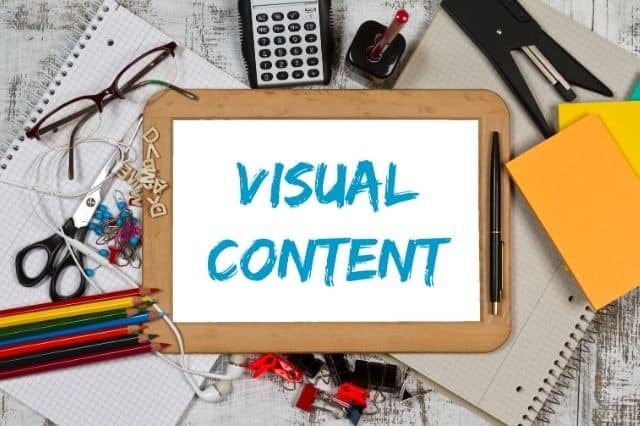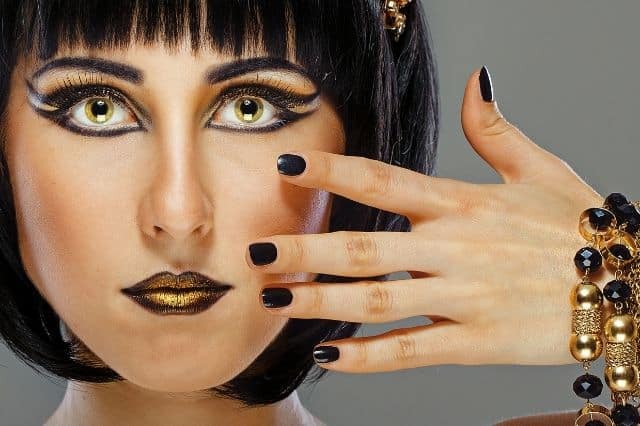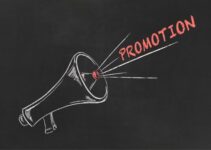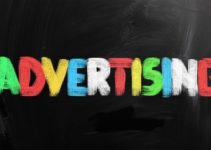Advertising Techniques: Most Common Techniques Used by the Advertisers
Different brands are trying to compete for the attention of customers. And because of the digital information overload, the collective attention span of customers has gone down. Consequently, customers have now become smarter, and advertising has to be done better to get their attention.
Every company now spends a ton of money on advertising their products and services to their target audience. Some of the main objectives of advertising are to create brand awareness, acquire market value, earn a good reputation, and make more sales. However, these can only be achieved if advertising is done correctly.
This post will walk you through some of the advertising techniques you need to use in 2020 and make more sales. So if you have been having nightmares advertising your products, services, or brand, keep reading to find out more on how you can up your advertising game.
Commonly Used Advertising Techniques in Visual Marketing
1. Color Psychology
Visual marketing is on another level, and advertisers are now using the power of color psychology to advertising products, services, and brands.
Now, the color psychology technique is often overlooked, yet this should not be the case. A slight color change could either make or break your brand; portraying the perfect or wrong emotion.
Color is used on your website or blog, logo, fonts, or any other branding elements, which is why you need to think of the perfect branding color that will resonate well with your target audience.
or any other branding elements, which is why you need to think of the perfect branding color that will resonate well with your target audience.
Make sure that every color you choose does its job. Don’t just include any color because you feel it should be there or because your competitor has included it.
Remember that colors communicate a message even without words. For example, the red color now speaks volumes for the Coca-Cola company, which is now a global brand.
2. Emotional Appeal
It wouldn’t be wrong to claim that emotionally charged ads can find a place in your target audience’s heart – because that’s a fact, by the way. An emotional appeal has proved to be one of the best advertising tactics most advertising gurus use today.
Advertisements with an emotional appeal such as fear, surprise, happiness, sadness, or anger do exceptionally well because customers can relate to any of those.
A good example is the story of the Smart Blogger founder, Jon Morrow, who can’t move anything but his head. His story touched so many souls, and the emotional appeal he created with his audiences has made him build a blog that now earns more than $100k every month.
There are a couple of considerations you need to consider before you create emotional ads. However, the most crucial thing is to research your target audience well so that you can understand their pain points. Knowing your target audience’s pain points is almost a guarantee that you will get their attention emotionally.
3. The Use of Repetition
Repetition is another advertising technique that’s working wonders for advertisers. Repetition is meant to create awareness and put more emphasis on what is being advertised. That is why you will realize that advertisers are repeating some words or repeating the same advertisement a couple of times. But how do you employ repetition as an advertising technique? Below are some of the ways to effectively use this technique:
- Advertise your product or service multiple times on TV.
- Send the same ad copies to multiple niche-magazines for publishing.
- Place the same ads on billboards to create more awareness.
- Create appealing digital ads and submit them to Google ads or any other advertising company like Mediavine.
- Tweak your ad copies using different colors, characters, and words.
- Push your ads to more people on Facebook through Facebook ad retargeting.
Repetition works best for new brands or companies, releasing a new product or service in the industry. And because you are just getting into the market or trying to create awareness, repetition would help convey the message across to your target audience.
4. Encouraging Customers to Join the Bandwagon
Bandwagon may be a common idiom commonly used by English native speakers, but this is a persuasive phrase used by advertisers to prompt customers to take action quickly.
The approach is to make an impression that several other people have tried the product or service and that it is your chance to jump on the bandwagon like the rest.
If you think of it critically, you will realize that most people will not love to be left behind, so it creates that urgency to the consumers to take action as soon as they can.
In other words, this technique relies on the Fear Of Missing Out (FOMO). An excellent example of a company that uses this advertising technique is Supreme. Another brand that uses this advertising tactic is Amazon by setting limited sales timeframes.
5. Body Language
Very many advertising campaigns include people in those ads. Whether you are doing video or static ads, body language is still very critical to the success of your advertising campaign. The person’s language can well describe confidence, happiness, relief, success, or any other sentiments in the ad.
Body language can be transmitted or shown by how someone smiles, stands, plays, or walks. Whether you have contracted a celebrity, influencer, or actor to take part in the ad, they must apply the right body language.
The way to get the appropriate body language is always planned. Usually, creative directors will liaise with clients to determine the right body language to be applied.
Once the creative director has liaised with the client to determine the body language, he or she will begin looking for the right person who can comfortably apply the body language needed. The person you choose to apply the body language will be guided during shooting until the desired body language can be reached.
6. Direct Gaze
Another continuity of body language advertising technique is the direct gaze technique, also known as the gaze induction technique. This technique is when someone looks at you straight into the eye.
The technique of direct gaze makes customers feel things when looked at intensely. Mostly, you will find this advertisement technique used by fashion brands that sell perfumes or wristwatches. The characters used in these techniques are usually celebrities who people consider beautiful or handsome.
7. Association and Connection with the Customer
Connecting a product or a brand with a celebrity or brand creates some psychological connection with the customer. The sporting industry has seen success with this advertising technique. For example, some of the most followed football players like Paul Pogba are associated with Adidas, Ronaldo is affiliated with Nike while Messi is affiliated with Adidas, just like Pogba.
Because of the love and obsession customers have for these iconic players, the chances are that they will buy the sportswear from these brands affiliated with them.
8. Claims Relating to a Product
Advertisements that focus on a particular product make claims about the capabilities of the product or service in the picture. It also promotes the specific elements of the products/services by outlining successful results and informing the buyer on the expectations.
Claims can include things like ‘locally obtained’, ‘new’, or ‘low price”. Claims can also overhype the information on a product to attract the attention of potential customers to buy. Meanwhile, avoid exaggerating as this could pose legal threats to your brand.
9. Minimalism
This advertising technique is commonly used in popular social media platforms such as Facebook and Instagram. And because potential customers are often engaged in social activities, it won’t hurt to slide your products into their newsfeed.
Minimalism is a go-to technique if you want to enhance the popularity of your product, as well as products. Plus it blends perfectly well with a variety of social platform layouts.
Outlining your product on a front-center layout with a white/neutral background can perform the trick very well. Not to mention, you can promote several products in a single ad.
10. Point of View
This marketing technique shows the action as if the viewer is doing it in reality. It’s mostly used in video advertising as videos can be taken from different points of view.
You can place a camera to a SteadyCam apparatus and set it at eye level or very close such that the video appears natural and makes the viewer feel part of it. GoPro cameras attached to helmets and Red bull are also excellent examples of the Point of View technique.
The recorded video is then uploaded on social media for advertising. Such footages are meant to sell the lifestyle in as much as they are used for advertising the brand.
11. Behind the Scenes
Let’s face it – behind the scenes are much more interesting than the actual advertisement. Please do this by showcasing your company’s indoor activities through social media, as it’s the platform with the vast majority of followers.
These can be photos of staff members working in an office or a short video that incorporates the significant scenes of the production. Behind-the-scenes, when used as an advertisement technique, can enhance customers’ connection with the products.
Using an influential employee as a social media manager is also an excellent idea for behind-the-scenes. This is an excellent in-house advertising technique. In such a scenario, the employee will upload photos, creative videos, and graphics created by the company’s team.
Users will always appreciate the honesty behind such scenes. This is because they can relate to the team’s hard work with their professions. Personalized advertising will also go a long way for B2B and B2C markets.
12. Association
Many advertising techniques are dependent on psychology. The same goes for the association technique, also known as association marketing. The visuals in the graphic should create associations for the viewer as the basis. Such can include feelings, places, reminiscences,s, or even ideas.
For this technique to be a success, in-depth research should be conducted beforehand so that the advertiser is well informed about the consumer. Most importantly, the association should have users’ in mind. Take a picture of Dettol liquid that incorporates scenes of children getting messy in the mud, but having lots of fun. This creates an association that in as much as kids get dirty, they can still bathe afterward.
Conclusion
Despite the advancing technology in digital advertising and digital marketing, the above techniques are likely to work in the future. All you need to do is identify your target audience and the best techniques to attract the most audience engagement. Feel free to try any of the above strategies to leverage your options; after all, it’s a free world. Most importantly, your choice of technique should be convincing and persuasive enough to attract potential customers to the products you’re promoting.









